6 Different Types of Ticks in Kansas (With Pictures)
-
Cassidy Sutton
- Last updated:
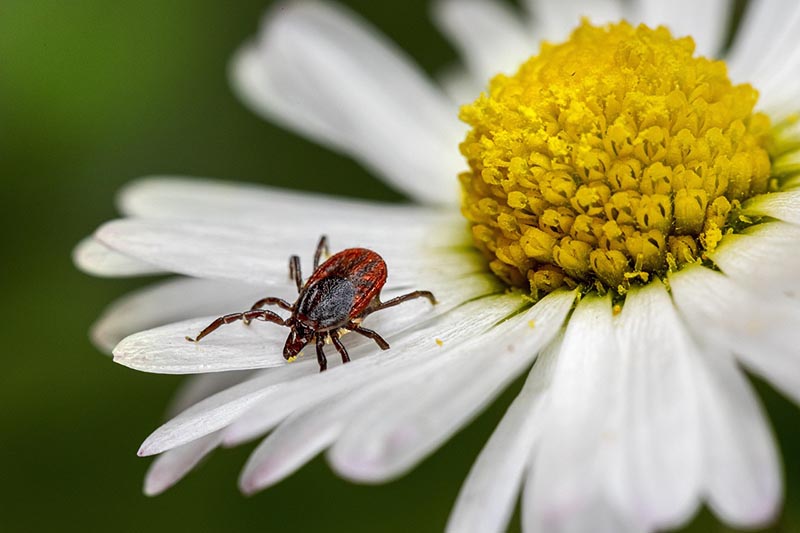
There’s a lot to love about Kansas: the wide-open skies, the vast array of birds, and the yellow-bursting sunflowers. But Kansas has a lot of pests, too, like ticks.
Ticks are a part of the arachnid family, and they can make anyone squirm. These nasty pests latch themselves onto flesh and feed until they balloon into the size of a marble. Finding one on your pet or livestock isn’t ideal, and it helps to know what you’re dealing with.
This post discusses six types of ticks in Kansas and everything about them, down to the stripes on their backs. Let’s dive in.
The 6 Types of Ticks in Kansas
1. Lone Star Tick
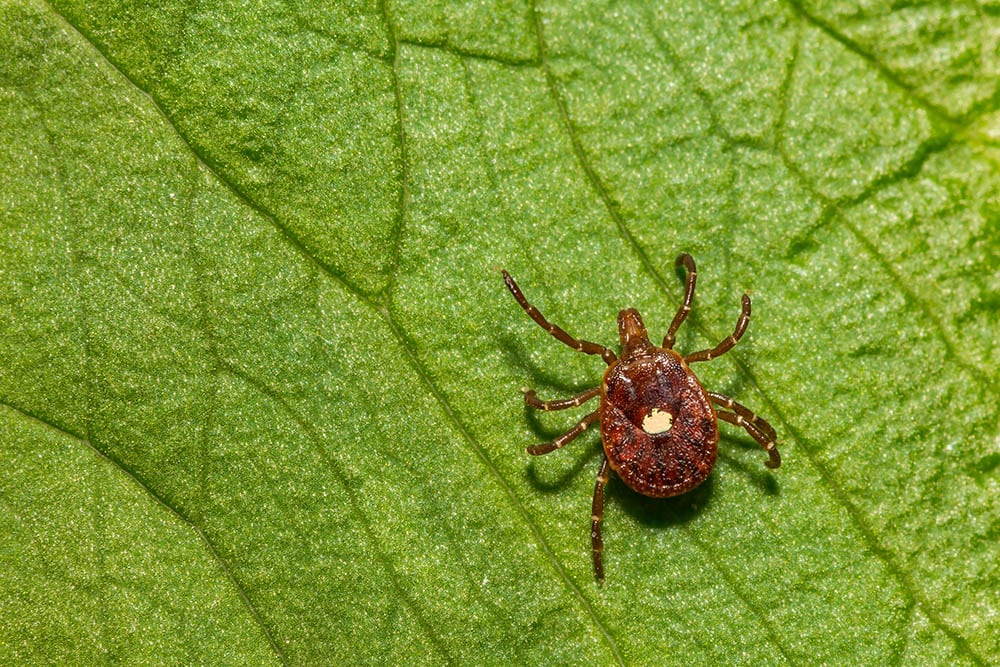
| Scientific name: | Amblyomma americanum |
| Season: | April – September |
| Color: | Brown with white or black stripes |
| Diseases: | ehrlichiosis, STARI, tularemia |
The Lone Star tick is the most common in Kansas and has increased its population in the last 20 years. Luckily, Lone Star ticks don’t live in the state year-round like other ticks. They only stick around from April through September.
These pests like to hang out in dense underbrush, grasslands, and anywhere else you would find wildlife. You can quickly identify a female because of its white mark on the back, whereas males have a black stripe on their backs.
Lone Star ticks don’t carry Lyme disease as many people think. Still, they carry a fair share of diseases like ehrlichiosis, STARI (Southern Tick Associated Rash Illness), and tularemia. Most people notice a rash where a Lone Star tick bites them.
2. American Dog Tick

| Scientific name: | Dermacentor variabilis |
| Season: | April – September |
| Color: | Brown with white stripes |
| Diseases: | anaplasmosis, Rocky Mountain spotted fever, tularemia |
The American Dog Tick is the second most commonly found tick in Kansas. Thankfully, it only lives in the state between April and September. The female and male ticks are brown, except the female has a prominent white stripe reaching from shoulder to shoulder. Male ticks have a pale white coloring all over their bodies.
You can find American Dog Ticks lounging around grasslands, shrubs, and edges of woodlands with little to no tree cover, waiting for a host to pass by. Surprisingly, these ticks can survive up to two years if no host is available. When they feed, American Dog Ticks can spread diseases like anaplasmosis, Rocky Mountain spotted fever, and tularemia.
3. Spinose Ear Tick
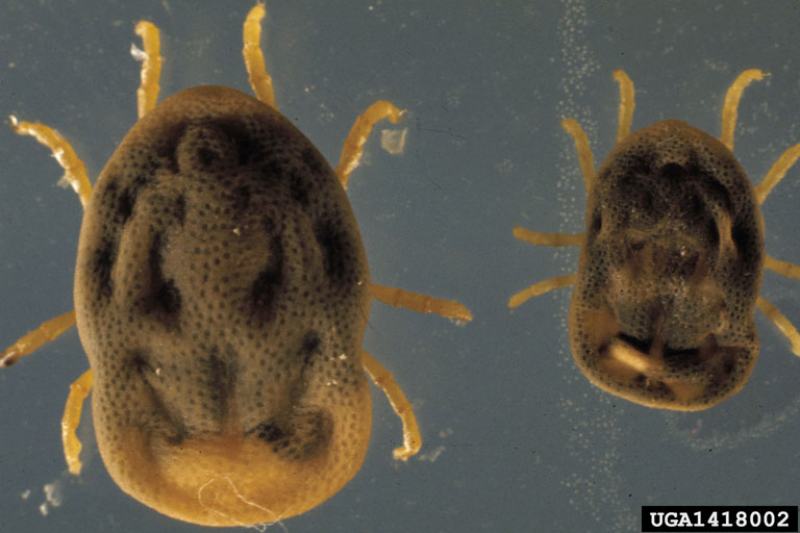
| Scientific name: | Otobius megnini |
| Season: | Year-round |
| Color: | Brown |
| Diseases: | None |
The Spinose Ear Tick was first mentioned in northern Mexico in 1883. Since then, this pest has hitchhiked its way over to Kansas, where it lives year-round.
The Spinose Ear Tick is very different compared to other ticks. For instance, this tick chooses one host for its entire lifecycle to feed on. While it feeds, the larvae move to the animal’s ears, where they will continue to feed, hence why this tick is called the Spinose Ear Tick.
Unlike other ticks, this tick doesn’t spread disease, but immature Spinose Ear Ticks can be parasitic and cause severe infestation around the ears.
4. Brown Dog Tick
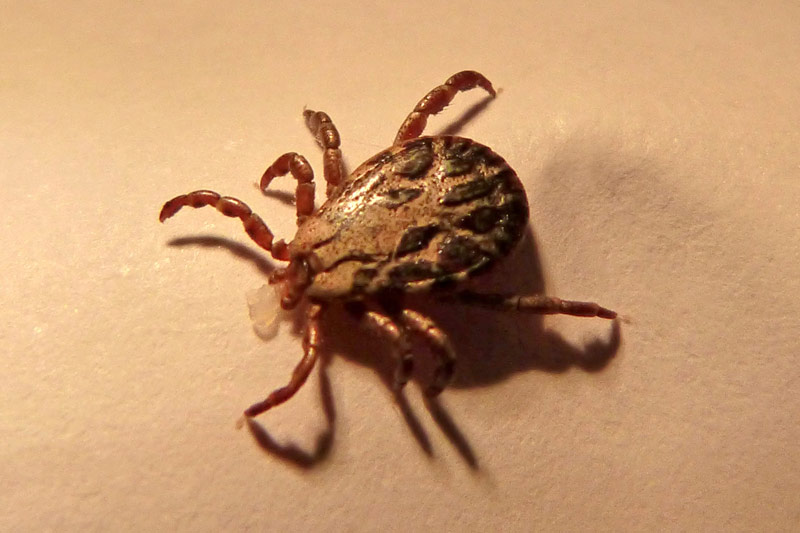
| Scientific name: | Rhipicephalus sanguineus |
| Season: | March – April |
| Color: | Brown |
| Diseases: | ehrlichiosis, Rocky Mountain spotted fever, canine babesiosis |
Brown Dog Ticks are more common around the Mexico border, but can be seen all over the US. You’re more likely to see these ticks in March and April in Kansas.
Brown Dog Ticks will feed on wildlife but prefer dogs as their host. Dogs suffering from tick infestations are more likely to blame this tick breed. Unlike other ticks, Brown Dog Ticks can complete their lifespan indoors, which is why these ticks are commonly found in dog kennels and homes. Females will even lay their eggs on top of kennels and inside cracks and crevices indoors.
Because these pests survive indoors, they quickly pass on diseases like ehrlichiosis, Rocky Mountain spotted fever, and canine babesiosis.
5. Blacklegged Tick
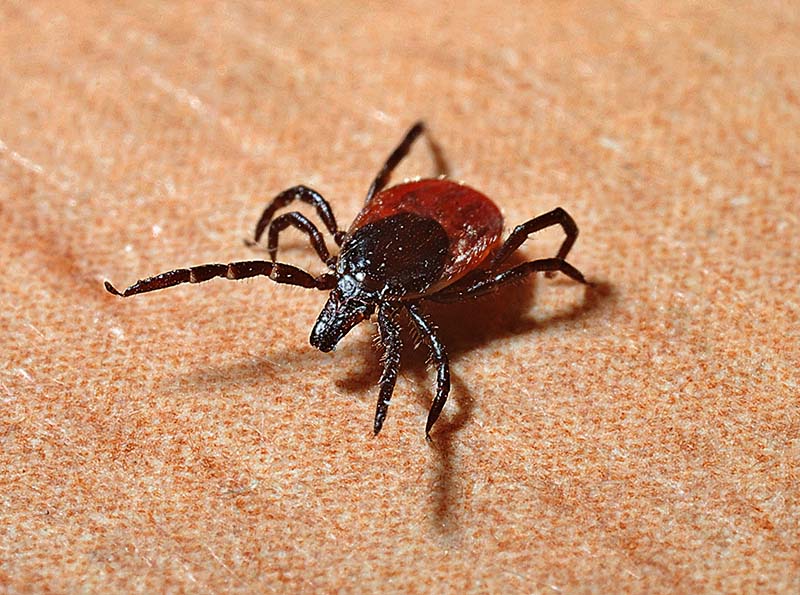
| Scientific name: | Ixodes scapularis |
| Season: | April – October |
| Color: | Reddish orange and/or black |
| Diseases: | Lyme disease, anaplasmosis |
Also known as the Deer Tick, the Blacklegged Tick lives in Kansas from April to October. The females have reddish-orange bodies, while the males are predominantly black. You can find a Blacklegged Tick in deciduous forests, grasslands, and forest edges, so they’re more common on the Kansas-Missouri border, where there are more trees.
These ticks prefer cooler weather, so you’ll unlikely notice them during the hottest part of the year. Still, they can show themselves at any time. Unfortunately, these ticks are one of the biggest contributors to Lyme disease, an increasing problem in Kansas. They also spread anaplasmosis.
6. East Asian Tick

| Scientific name: | Haemaphysalis longicornis |
| Season: | April – August |
| Color: | Reddish brown |
| Diseases: | Theileriosis, SFTSV, Lyme disease, anaplasmosis, Rocky Mountain spotted fever, ehrlichiosis |
Also called the Longhorned Tick, the East Asian Tick is the most unlikely tick to be seen in Kansas. In fact, one hasn’t been reported yet. They recently appeared in Virginia, West Virginia, and Arkansas in 2017. But because these ticks were found on traveling livestock, they could appear anywhere, more likely between April and August.
Longhorned Ticks are reddish-brown and carry several diseases, including theileriosis, SFTSV, Lyme disease, anaplasmosis, Rocky Mountain spotted fever, and ehrlichiosis. It’s wise to keep your eyes open to these pests, especially if you have livestock.
Most Common Tick Diseases and Symptoms
The most commonly known disease that ticks carry is Lyme disease, but they can also carry other diseases. In Kansas, the most common tick diseases include:
- Ehrlichiosis
- Rocky Mountain spotted fever
- Theileriosis
- SFTSV
- STARI
- Tularemia
- Anaplasmosis
- Canine Babesiosis
There are other diseases, but these are diseases spread by ticks found in the Kansas area.
Every disease has specific symptoms, and it takes a while for symptoms to show, especially in animals. You won’t notice them immediately. Still, the most common symptoms of tick-borne illnesses include:
- Fever
- Chills
- Sensitive to touch
- Joint pain
- Rash
Animals are good at hiding discomfort and rarely show symptoms, regardless of infection. That’s why it’s a good idea to start your pet on flea and tick prevention and do a body check during the peak tick season.
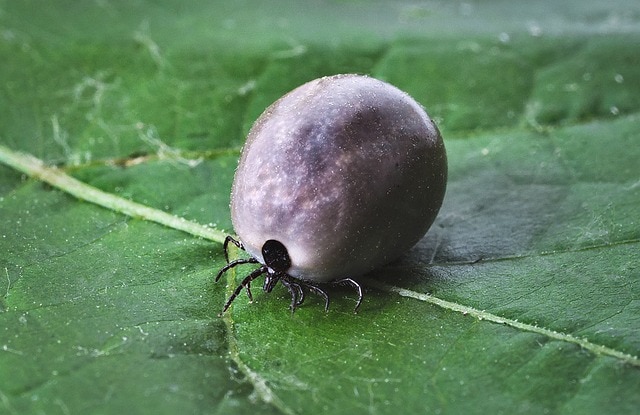
How to Check Your Pet for Ticks
The best way to locate a tick is by running your fingers through your pet’s fur and feeling for any bumps. Ticks are excellent at playing hide and seek, so you want to take your time finding them, especially long-haired animals.
To ensure a thorough body check, go over these parts of your pet’s body:
- Head
- Ears
- Back
- Between the toes
- The area where the legs connect to the body
You might come across something that looks like a tick, like a skin tag or a scab. These can be alarming because you’re uncertain if it’s a tick. Here’s how you can tell the difference- ticks clamp onto the skin so pulling it off is difficult. Ticks will also have tiny legs and, most likely, a large, inflated body.
What to Do if Your Pet Has a Tick
Don’t panic! Animals get ticks, so it doesn’t mean your dog already has a disease. Still, you want to remove the tick immediately to prevent infection.
Thankfully, removing a tick isn’t complicated unless your pet is squirmy. If so, it helps to have a buddy help you if you can.
All you need is a tick remover or tweezers and a disinfectant like rubbing alcohol. The most important thing to remember is to remove the tick head. Always double-check that the ticks head is gone. Many owners believe that the task is over once the body’s gone. But ticks can keep feeding if the head is still attached.
The following video walks you through removing a tick using a tick-removing tool. If you don’t have a tick-removing tool, you can just use your tweezers.
In Conclusion
If you’re completely disgusted by now, we don’t blame you. Ticks are creepy crawlies that we could all live without. But now you have information to help you if you come across a tick from the Great Plains.
Remember: if you find a tick on your animal, don’t panic. Remove the tick promptly and watch for any common tick signs. It helps to identify the tick, so you know which symptoms to look for. Thankfully, you have a handy-dandy guide to help you.
- https://www.cdc.gov/ticks/index.html
- https://www.cdc.gov/stari/disease/index.html
- https://ksoutdoors.com/Outdoor-Activities/Outdoor-Health-and-Safety/Tick-Bite-Prevention#:~:text=The%20ticks%20most%20often%20encountered,and%20Rocky%20Mountain%20spotted%20fever.
- https://www.ksvdl.org/resources/tick_identification.html
- https://www.douglas.k-state.edu/docs/lawnandgarden/ticks-in-kansas.pdf
- https://www.veterinaryentomology.org/spinose-ear-tick
- https://entnemdept.ufl.edu/creatures/urban/medical/brown_dog_tick.htm
- https://pubmed.ncbi.nlm.nih.gov/20557458/#:~:text=Adult%20ticks%20were%20found%20throughout,per%20year%20in%20this%20area.
- https://web.uri.edu/tickencounter/species/dog-tick/
- https://web.uri.edu/tickencounter/species/brown-dog-tick/
Featured Image Credit: Erik Karits, Pixabay
Contents


